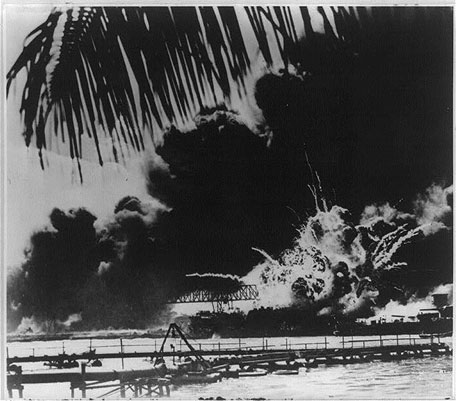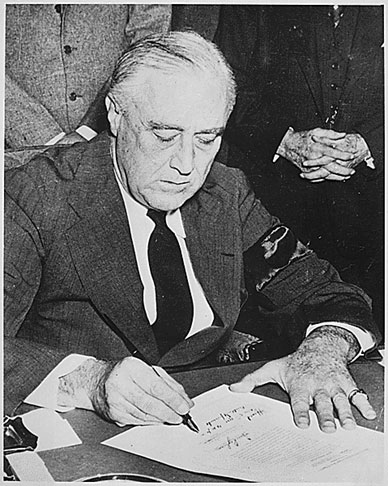
Source: [Pearl Harbor naval base and U.S.S. Shaw aflame after the Japanese attack], Library of Congress
World War II started on September 1, 1939, with the German invasion of Poland. With war already raging in Asia, the invasion sparked a global conflict that lasted until 1945. The Axis Powers fought relentlessly against the Allied Powers for dominance around the world.
The United States remained neutral in the war until Japan, a member of the Axis Powers, attacked an American naval base at Pearl Harbor, Hawaii, on December 7, 1941. In response to the attack and a dramatic speech by President Franklin Delano Roosevelt, the U.S. Congress declared war on Japan on December 8, 1941. Three days later, the United States declared war on Germany and Italy.

Source: [Pearl Harbor naval base and U.S.S. Shaw aflame after the Japanese attack], Library of Congress
Click on the link below to watch a video about the attack on Pearl Harbor.

Source: Photo, FDR signing declaration, National Archives
This attack and the subsequent entry into war galvanized all Americans as the nation braced for war. For Americans, the war would be fought abroad and on the home front.
In this lesson, you will identify the social and economic impact of World War II on the American home front.